Md. Rahimullah Miah1, Shahriar Hussain Chowdhury2, Jorin Tasnim Parisha3, Md Mahbubur Rashid2, Md Mehedi Hassan4, Alexander Kiew Sayok5
1Department of IT in Health, North East Medical College, Affiliated with Sylhet Medical University, Sylhet, Bangladesh; and PhD Awardee, IBEC, Universiti Malaysia Sarawak (UNIMAS), Malaysia
2Department of Dermatology, North East Medical College and Hospital, Affiliated with Sylhet Medical University, Sylhet, Bangladesh
3Government Satis Chandra Girls’ High School, Sunamganj Sadar, Sunamganj, Bangladesh
4Department of Law, Green University of Bangladesh, Dhaka, Bangladesh
5IBEC, Universiti Malaysia Sarawak, Kota Samarahan, Sarawak, Malaysia
Correspondence to: Md. Rahimullah Miah, Department of IT in Health, North East Medical College, Affiliated with Sylhet Medical University, Sylhet, Bangladesh; and PhD Awardee, IBEC, Universiti Malaysia Sarawak (UNIMAS), Malaysia.
| Email: |  |
Copyright © 2023 The Author(s). Published by Scientific & Academic Publishing.
This work is licensed under the Creative Commons Attribution International License (CC BY).
http://creativecommons.org/licenses/by/4.0/

Abstract
Skin is the largest organ of the body that protects and covers the body. Healthy skin is essential for the human body. For any reason, various skin diseases suddenly affect the health, resulting in severe effects on mental, physical, social and environmental conditions. But health professionals have been facing tough challenges in identifying the root cause of disease for several years. This study aims to evaluate the impact of wireless sensor technology on skin diseases. Primary data were collected from laboratory experiments, interviews and questionnaire surveys, while secondary data were obtained from various sources. Studies have shown that viruses and bacteria not only cause skin diseases, but also humans misuse wireless sensor technology. Cybercriminals use wireless sensor technology to track the organs of individuals selected for the development of skin diseases and control the long-term spread of the disease among patients through cloud networks. The survey also shows that acute disease healthcare technical knowledge is essential for recovery from primary skin disorders but that such knowledge is equally lacking among providers. These results reflect the importance of dermatological services provided by dermatologists. The study suggests future research pathways for alternative treatment approaches for skin disease recovery through safe technologies and user-friendly systems with promotion of mental health linked to national policies and Sustainable Development Goals 2030.
Keywords:
Skin disease, Wireless technology, Body organ, Policy
Cite this paper: Md. Rahimullah Miah, Shahriar Hussain Chowdhury, Jorin Tasnim Parisha, Md Mahbubur Rashid, Md Mehedi Hassan, Alexander Kiew Sayok, Impact of Radiofrequency Tracking on Body Surfaces for Acute Exacerbations of Skin Disease, American Journal of Dermatology and Venereology, Vol. 12 No. 1, 2023, pp. 1-9. doi: 10.5923/j.ajdv.20231201.01.
1. Introduction
Skin is the largest organ of the body that protects and covers the body [1]. The benefits of healthy skin are unimaginable. So healthy and beautiful skin is a must for everyone. But when this healthy skin is suddenly affected by various diseases, its impact on mental, physical, social and environmental conditions is severe. Skin diseases are among the most common of all human health problems [2]. There is no human or animal in the world that has never suffered from skin diseases. It is surprising that every year around 900 million people in the world are affected by this disease and the incidence is increasing day by day [3]. In general, it is responsible for 80% of all skin diseases that make people sick.People still have misconceptions about the origin of skin diseases. Many people still cannot say what is the main source or where? When a skin disease suddenly appears in a village of the country, different people say different things. Others keep its exact source secret. Although this skin disease is increasing day by day, but have we ever thought of a way to get rid of it? What is the easiest way to eliminate this skin disease? Why suddenly our body itches? Have we ever thought about the main mystery before skin disease? So, are we all affected by this skin disease by any agent or media? Many people say that viruses, bacteria, fungi etc. are responsible for skin diseases. Are they really responsible for sudden skin disease? To find the answer to this question, it is necessary to know this study, so that the original source can be found. For this reason, the question arises in the mind of many people, why healthy skin is suddenly diseased? According to experts, skin diseases are caused by internal diseases. A person's health status can be understood by skin diseases. Both skin diseases, and signs and symptoms of skin diseases, can cause pain and irritation. Many skin diseases are caused by genetics. Besides, in many cases allergic skin reactions occur due to viral or bacterial infections. When a skin disease spreads widely in a populated area, different experts attribute different causes. But does wireless sensor technology have any effect on skin disease? Has anyone ever thought of this? Various skin diseases are affected by advanced sensor technology, which is known by advanced research at the Universiti Malaysia Sarawak (UNIMAS), Malaysia. Some skin diseases are associated with sudden onset in the particular GPS location, long-term disfigurement, multimorbidity, disability, unusual severity, and stigma. The research aims to assess the state of skin diseases due to advanced body surface radio frequency tracking at a selected GPS location.
2. Materials and Methods
The study was followed diverse materials and methods, which are illustrated as below.
2.1. Data and Sample Size
Qualitative and quantitative dermal data were collected through field survey, observation, interviews, informal contact on the innovative technological users towards man, woman and children with diverse professions. The secondary data were also obtained from different sources.
2.2. ISNAH Procedure
ISNAH- Impact of Sensor Networks towards Animals and Human beings [1,11]. The study followed different steps, which as shown in Figure 1. Tracking Processes at a fixed GPS position and open active eyes occurred in (a) One to one tracking with node sensors at a particular GPS location, (b) One to many tracking with central sensors at democratic place assembly, and (c) Many to many with distributed sensors at human right rally and gathering places.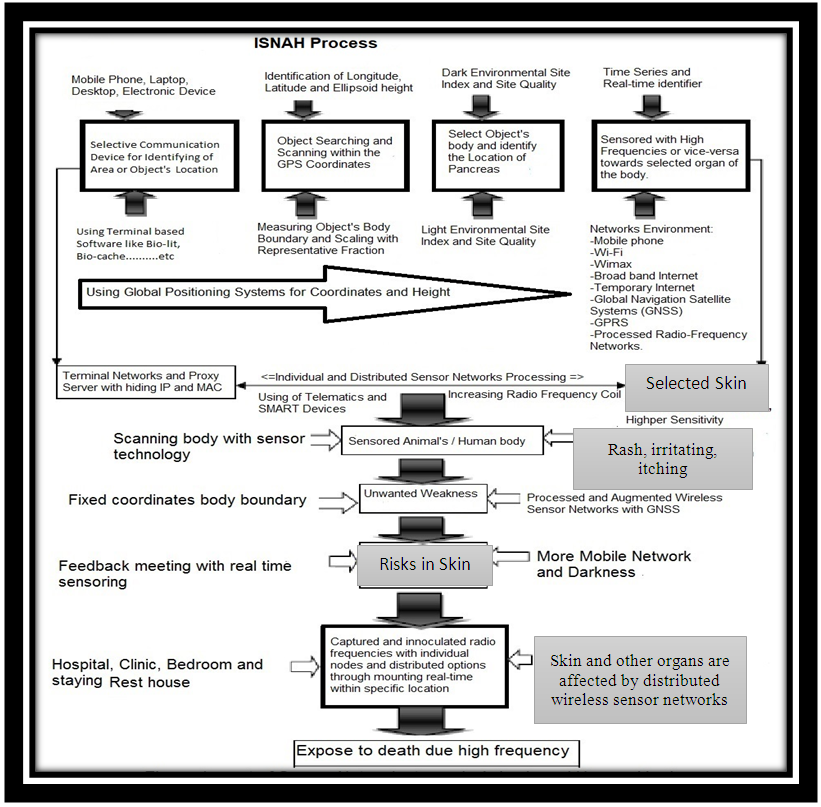 | Figure 1. Procedure of ISNAH towards doctors and patients [1] |
2.3. Data Compilation
All quantitative and qualitative related dermal data were collected and compiled according to research objectives.
2.4. Data Analysis and Interpretation
The compiled data checked for accuracy from various sources are also verified for the preparation of master sheet for analysis and interpretation using updated software like MS Office 2021, R ver. 3.6 and SPSS ver.29.
3. Results
Due to tracking with advanced wireless sensor technology to individual’s body surface at a particular GPS location, the following symptoms and signs identified as a sensor skin disease.
3.1. Symptoms of Skin Disease Due to Wireless Tracking towards Body Surface
 | Figure 2. Skin diseases due to tracking with wireless sensor technology |
Sensor Acne | Figure 3. Sensor Acne disease due to tracking with wireless sensor technology |
Sensor Blister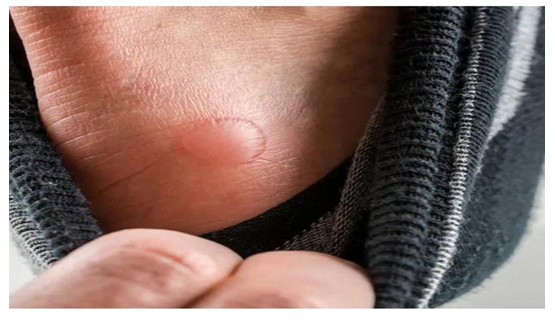 | Figure 4. Sensor Blister disease due to tracking with wireless sensor technology |
Sensor Hives | Figure 5. Sensor Hives disease due to tracking with wireless sensor technology |
Sensor Rosacea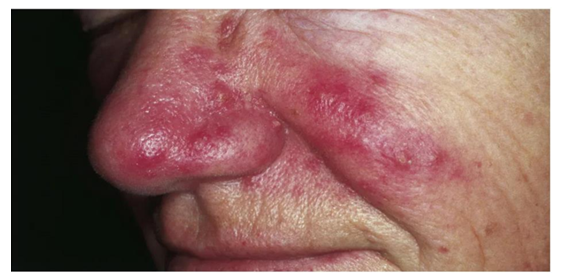 | Figure 6. Sensor Rosacea disease due to tracking with wireless sensor technology |
Sensor Carbuncle | Figure 7. Sensor Carbuncle disease due to tracking with wireless sensor technology |
Sensor Latex Allergy | Figure 8. Sensor Allergy disease due to tracking with wireless sensor technology |
Sensor Eczema | Figure 9. Sensor Eczema disease due to tracking with wireless sensor technology |
Sensor Psoriasis | Figure 10. Sensor Psoriasis disease due to tracking with wireless sensor technology |
Sensor Cellulitis | Figure 11. Sensor Cellulitis disease due to tracking with wireless sensor technology |
Sensor Measles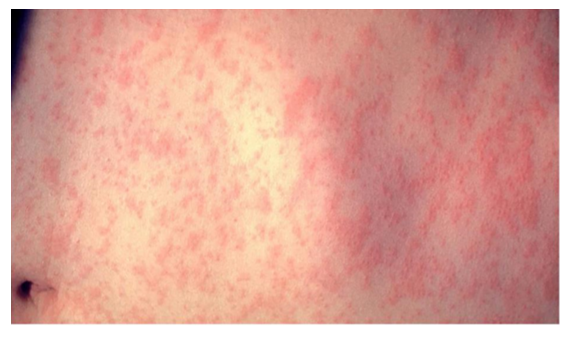 | Figure 12. Sensor Measles disease due to tracking with wireless sensor technology |
Sensor Melanoma | Figure 13. Sensor Melanoma disease due to tracking with wireless sensor technology |
Sensor Lupus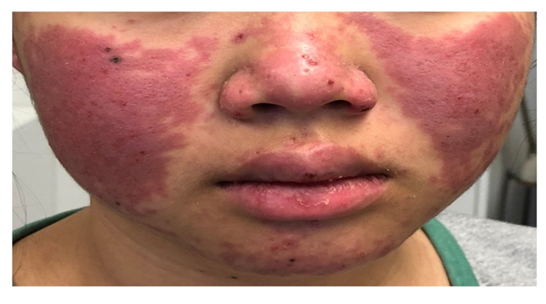 | Figure 14. Sensor Lupus disease due to tracking with wireless sensor technology |
Sensor Contact dermatitis | Figure 15. Sensor Contact dermatitis disease due to tracking with wireless sensor technology |
Sensor Wart | Figure 16. Sensor Wart disease due to tracking with wireless sensor technology |
Sensor Chickenpox | Figure 17. Sensor Chickenpox disease due to tracking with wireless sensor technology |
Sensor Monkeypox | Figure 18. Sensor Monkeypox disease due to tracking with wireless sensor technology |
Sensor Keratosis Pilaris | Figure 19. Sensor Keratosis Pilaris disease due to tracking with wireless sensor technology |
Sensor Ringworm | Figure 20. Sensor Ringworm disease due to tracking with wireless sensor technology |
Sensor Melasma | Figure 21. Sensor Melasma disease due to tracking with wireless sensor technology |
Sensor Impetigo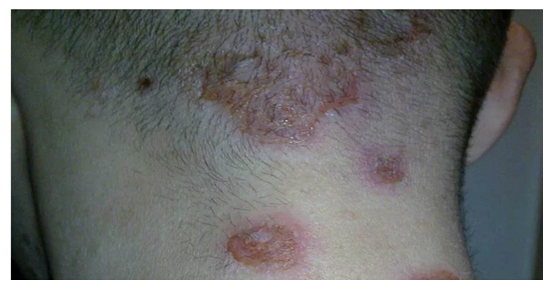 | Figure 22. Sensor Impetigo disease due to tracking with wireless sensor technology |
Sensor Neurofibromatosis | Figure 23. Sensor Neurofibromatosis disease due to tracking with wireless sensor technology |
Sensor Leishmaniasis | Figure 24. Sensor Leishmaniasis disease due to tracking with wireless sensor technology |
Sensor Erythema Gyratum Repens | Figure 25. Sensor Erythema gyratum repens disease due to tracking with wireless sensor technology |
Xeroderma pigmentosum | Figure 26. Sensor Xeroderma pigmentosum disease due to tracking with wireless sensor technology |
Sensor Rectum Itching | Figure 27. Sensor Rectum Itching disease due to tracking with wireless sensor technology |
Digital Acid Attack | Figure 28. Sensor Digital Acid Attack due to tracking with wireless sensor technology |
3.2. Tracking Process
Firstly, Individual’s location identified with open active eyes to create a electromagnetic field in the skin/ body surface, then tracked with electromagnetic needle and electromagnetic bubble to the programmed body surface as below:[Select Individual’s body è Tracking with Wireless Sensor è Image Sensor è Neuro-Transmitter è Irritated Itching, poisoning, peppering, boiling etc.]
3.3. Case Study 1 on Spreading Dermal Disease
Hundreds of people have been affected by an unknown skin disease in two villages of Chuadanga, Bangladesh. The number of patients is increasing every day. One died. As a result, panic is spreading in the area. Medicines do not match. The local health department and non-governmental organizations are coming forward but there is no solution. Ratirampur village of Utholi union is situated in Jibannagar subdistrict of Chuadanga. About one and a half to two thousand people live in the village. Struggling with financial poverty, while the wheel of life of the village dwellers is moving towards affluence, an unknown skin disease takes root in every house. All men, women and children in the village are affected by this disease year after year. Most of the victims are poor and are deprived of necessary treatment. Meanwhile, after the death of a woman among the victims, there is an unknown panic in the village. Apart from this, no one in the village mingles with the people suffering from this skin disease due to burning sores on their bodies. No one comes to their house. No one sits next to the children of affected families in school. Nobody wants to even play with them. The affected person and his family are living such an inhumane life. On the other hand, Wave Foundation, a private aid organization, has come forward to treat the victims. But it is not enough. Since this unknown skin disease has spread widely among the people of the area from Ratirampur village to the neighboring villages, many people are seeing it as a pandemic or a dangerous disease. Doctors have identified this skin disease as irritant contact dermatitis. Some patients say about this disease, there is a big pond between Ratirampur and Rangiya Pota village. Common people of two villages bathe regularly in this pond. Along with humans, cattle are bathed in the pond. The dung of these cattle mixed with the water changed the shape of the water. As a result, water becomes polluted. Many people think that people can easily get fungal skin diseases due to bathing with this contaminated water. But higher studies suggest that this is a misconception of patients. The main source of this disease is the wireless sensor tracking that cybercriminals spread through technology at specific GPS locations, which is known in ISNAH research. Moreover, a large number of women, men and children are suffering from unknown skin diseases in the said villages, while lack of proper activities of the health administration is observed. Despite going to various doctors and dermatologists, there is no cure for this skin disease. As a result, the people of several nearby villages are in fear of the severity of this disease. | Figure 29. Unknown Skin Diseases in Chuadanga district, Bangladesh |
3.4. Case Study 2 on Dermal Diseases in Rohingya Camp
An outbreak of a skin disease called scabies has increased among Rohingya refugees living in camps in Cox's Bazar, Bangladesh. This skin disease has doubled in 2021 compared to 2019 and its infections continue to increase abnormally in 2022. In Balukhali, Gyalmara, Jamtali and Kutapalong centers, about 90% of patients are affected by this skin disease and about 80% of them are children and adolescents below 15 years of age. Unexpected outbreaks of potentially fatal scabies is a skin disease that causes severe, persistent itching and a pimple-like rash on the top layer of the skin in most people. Scabies usually affects men, women and children but if left untreated, it can quickly spread to the whole family. In erosive skin itches all day and the patient cannot sleep, and can hardly eat, when the skin breaks, the patient's body bleeds. In addition to the erogenous effect being intensely uncomfortable, scratching can cause skin breakdown and a small wound can easily become infected. Untreated superinfections such as sepsis can be fatal and require special follow-up. They live in poor living conditions and are prone to scabies. The sharp increase in this disease is directly related to their lifestyle, where cybercriminals also live with them. However, people share small, cramped spaces and have access to insufficient water for clothes, bedding and washing themselves. Once a person is infected with a highly contagious infection, it spreads quickly and the chances of re-infection are high, despite cybercriminals repeatedly tracking wireless sensors. Scabies eradication is a major challenge in the densely populated Rohingya refugee camps. The disease has a huge impact on the quality of life of the people in the already difficult conditions in these camps.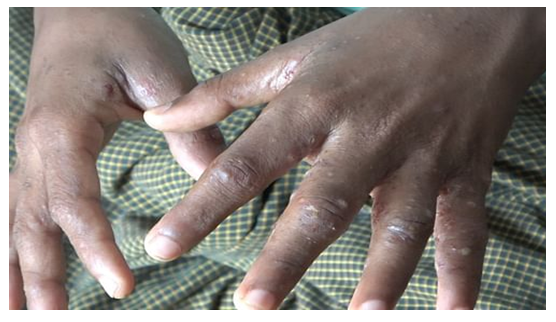 | Figure 30. Scabies affected in hands at Rohingya Camp in Cox’s bazar, Bangladesh |
 | Figure 31. Scabies affected in head at Rohingya Camp in Cox’s bazar, Bangladesh |
4. Discussion
The study illustrated on skin diseases due to tracking with advanced wireless sensor technology at a fixed GPS location. The study showed that any skin disease can be created to individual due to fluctuated radiofrequency dissemination.Almost 90 per cent of all skin diseases treated at MSF’s Balukhali, Goyalmara, Jamtoli and Kutapalong facilities in Bangladesh have been for scabies over recent weeks. Around 80 per cent of patients treated have been children and adolescents under the age of 15. Cases of skin diseases in 2021 were more than double those of 2019, with 73,000 people treated, and infections are continuing to climb in 2022 [5].
4.1. Myths about Skin Disease
Many suffer from skin diseases for a long time. No one can find any correct solution for this. Being bound by various superstitions, the patients are not getting any relief even with various treatments. These skin patients are unaware of the abuses from environmental, ecological, social and technological perspectives. Many dermatologists are unaware of the root cause. Cybercriminals are spreading various skin diseases by abusing wireless sensor technology, but many fear legal action and administrations don't know how to evaluate the technology. Many people do not allow skin patients to sit next to them. Some doctors call these skin diseases as genetic diseases or infectious diseases. Cybercriminals bring insults about these patients to the community and society in various ways. As a result, these patients are mentally damaged. Some cybercriminals break the marriage of women with skin disease in the society. Patients are socially isolated and bound by religious superstitions. Thus, life gradually becomes dull. Again, to avoid this disease, superstition ornaments are worn on the hands and neck. Even if individuals lie to the society about skin diseases like this, no one can find a cure. A beautiful solution has been provided through this research, which will benefit the present and future generations.
5. Conclusions
Finally, studies have shown that misuse of wireless sensor technology leads to skin diseases. This abuse is being done by cyber-criminals worldwide through cloud networks. Health administration and policy makers are still not fully aware of this phenomenon. But the impact of this disease is increasing day by day, if no remedy is taken, it will spread in the form of an epidemic and many people and animals will be harmed. As a result, the Sustainable Development Goals are unlikely to be achieved.
6. Declaration
FundingThis research work is a part of PhD Thesis, which was funded by the Zamalah Postgraduate Scholarship of UNIMAS, Malaysia and also sponsored by the Information and Communication Technology Division, Ministry of Posts, Telecommunications and Information Technology, Government of People’s Republic of Bangladesh. The funders had no role in the design of the research, in data collection, analyses or final interpretation of data, in the writings of the manuscript, or in the decision to publish the findings.Data AvailabilityThe data being used to support the findings of this research work are available from the corresponding author upon request. Competing InterestsThe authors declare no potential conflict of interests in this research work.
ACKNOWLEDGEMENTS
The authors acknowledged the authority of Universiti of Malaysia Sarawak (UNIMAS), Malaysia for providing the Zamalah Postgraduate Scholarship for the completion of PhD degree. The authors are also grateful to the authority of the Information and Communication Technology Division, Ministry of Posts, Telecommunications and Information Technology, Government of People’s Republic of Bangladesh, for PhD Fellowship during the higher study in Malaysia. The authors acknowledged the authority of North East Medical College Hospital (NEMCH), affiliated with Sylhet Medical University at Sylhet in Bangladesh for kind support.
References
| [1] | Chowdhury, S.H., Rashid, M., Miah, M.R., Shahriar, C.S. & Tasnia Tabassum, T. (2021). Effect of Skin Diseases in Modernized Life, American Journal of Dermatology and Venereology, 10(2), 13-24. doi: 10.5923/j.ajdv.20211002.01. url: http://article.sapub.org/10.5923.j.ajdv.20211002.01.html. |
| [2] | Miah, M.R., Hasan, M.M., Parisha, J.T. & Chowdhury, S.H. (2022). Socioeconomic Impact of the Coronavirus Pandemic with Multiple Factors on Global Healthcare Policy. Journal of Politics and Law, 15(4), 242. doi: 10.5539/jpl.v15n4p242, url: https://doi.org/10.5539/jpl.v15n4p242. |
| [3] | Hay RJ, Johns NE, Williams HC, Bolliger IW, Dellavalle RP, Margolis DJ, Marks R et al. (2014). The global burden of skin disease in 2010: an analysis of the prevalence and impact of skin conditions. J Invest Dermatol., 134: 1527–34. doi:10.1038/jid.2013.446. |
| [4] | WHO. (2018). Recognizing neglected skin diseases: WHO publishes pictorial training guide. World Health Organization (WHO). url: https://www.who.int/news/item/08-06-2018-recognizing-neglected-skin-diseases- who-publishes-pictorial-training-guide (Retrieved on April 12, 2023 at 12:00 pm National Time). |
| [5] | OCHA. (2022, March 25). Unprecedented increase of scabies cases in Cox’s Bazar refugee camps. Reliefweb, OCHA. url: https://reliefweb.int/report/bangladesh/unprecedented-increase-scabies-cases-cox-s-bazar-refugee-camps (Retrieved on April 4, 2023 at 12:00pm). |
| [6] | Bbarta 24. (2019, December 5). Unknown skin disease in Chuadanga and Panic. url: https://www.bbarta24.net/whole-country/108323. |


































 Abstract
Abstract Reference
Reference Full-Text PDF
Full-Text PDF Full-text HTML
Full-text HTML